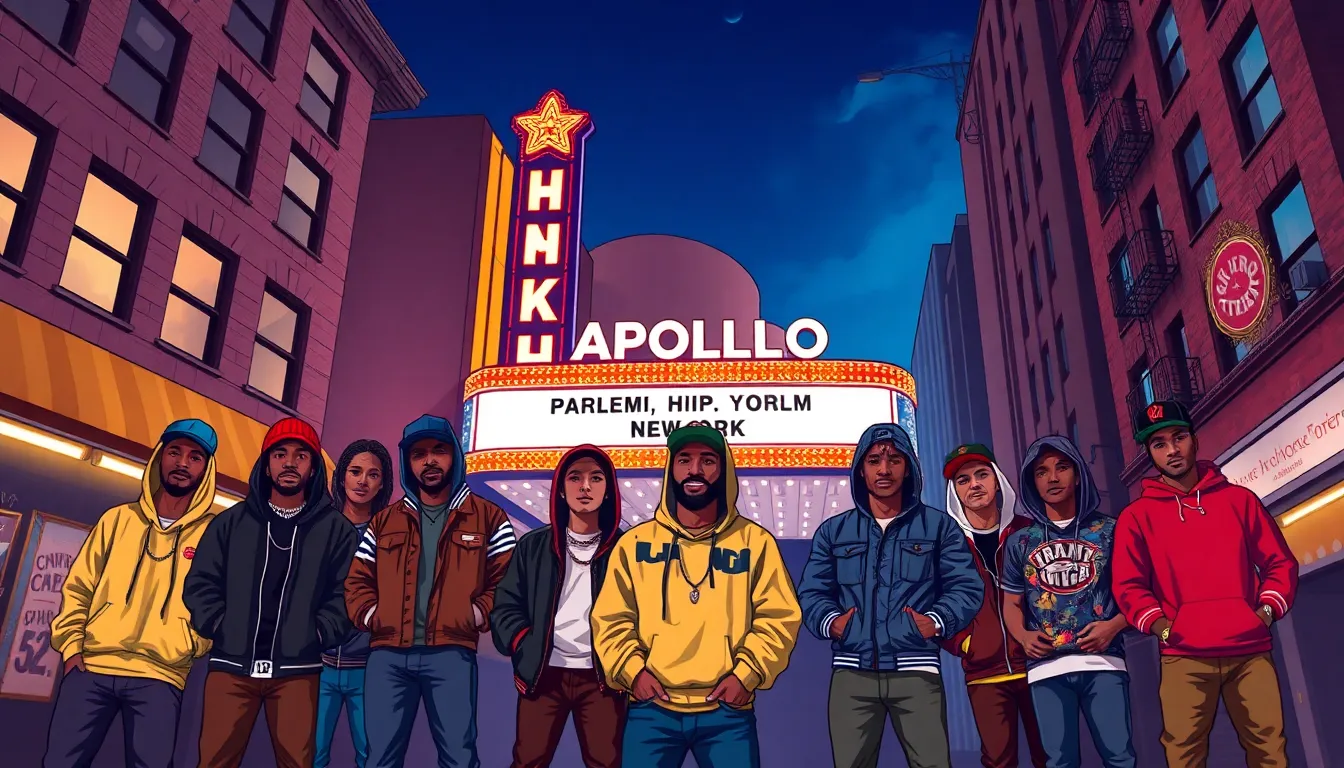Hip-hop isn’t just a genre; it’s a movement, a lifestyle, and for many, a religion. The venues where this vibrant culture thrives are like sacred spaces, each with its own unique vibe and history. From underground clubs that feel like a secret society to massive arenas where legends are born, these hotspots are where magic happens.
Table of Contents
ToggleOverview of Hip-Hop Venues
Hip-hop venues play a crucial role in fostering the culture and community around the genre. These spaces serve as platforms for artists and fans to connect, share, and celebrate the movement.
Definition and Importance
Hip-hop venues encompass various locations that host hip-hop performances, battles, and events. They contribute significantly to local cultural scenes by providing spaces where artists can express creativity. Intimate clubs allow emerging talent to showcase their skills, while larger arenas accommodate established acts. Each venue shapes the hip-hop experience, influencing everything from audience interaction to performance style. By supporting these venues, communities nurture artistic development and strengthen cultural identity.
Evolution of Hip-Hop Venues
Hip-hop venues evolved alongside the genre’s growth from the late 1970s to the present. Initially, informal gatherings in parks and community centers provided platforms for expression. The rise of iconic clubs in urban centers marked a shift toward more structured venues dedicated to hip-hop culture. In the 1990s, larger concert halls emerged, hosting major artists and attracting diverse audiences. Nowadays, the rise of digital streaming and social media continues to influence how venues operate. This evolution reflects hip-hop’s adaptability, revealing how venues remain essential to its thriving community.
Iconic Hip-Hop Venues


Hip-hop’s vibrancy is showcased in several iconic venues that have shaped the culture and its artists. Each location contributes uniquely to the hip-hop narrative.
The Apollo Theater
The Apollo Theater, located in Harlem, New York, holds legendary status within the music world. It has a long history of hosting transformative performances since its opening in 1914. Various iconic artists, including Biggie Smalls and Jay-Z, graced its stage, amplifying their legacies. The theater’s * Amateur Night* gives upcoming artists a platform to showcase their talent, fostering new generations. It remains crucial in celebrating African-American culture and artistry.
The Fillmore
The Fillmore in San Francisco became influential after its opening in the 1960s. Known for intimate performances, it attracted numerous hip-hop acts seeking to connect with fans closer. Notable artists such as Tupac Shakur and Nas have made memorable appearances, solidifying its reputation. The venue’s rich history blends with modern acts, showcasing hip-hop’s evolution over time. Its environment thrives on community, making it an essential stop for both seasoned and rising talents.
The House of Blues
The House of Blues chain spread across the United States, emphasizing a diverse lineup. Hip-hop artists often perform in locations like Los Angeles and Chicago, enhancing the music scene. Each venue features unique local culture, creating a captivating atmosphere for fans. Established acts and emerging talents share the stage, creating memorable experiences. The House of Blues supports various genres, exemplifying hip-hop’s adaptability and broad appeal.
Emerging Hip-Hop Venues
Emerging hip-hop venues play a crucial role in the vibrant music scene, offering platforms for new talent and fostering community. These spaces reflect the evolving nature of hip-hop culture.
Underground Spots
Underground spots provide an intimate atmosphere, encouraging creativity and raw expression. Artists often showcase their work in basements, warehouses, and small clubs, where the audience experiences the energy up close. Venues like the Knitting Factory in Brooklyn and the Blue Note have become essential for discovering fresh talent. Many underground locations host open mic nights or freestyle sessions, allowing aspiring hip-hop artists to connect with others in the community.
Local Hotspots
Local hotspots serve as gathering places for fans and artists alike, combining music and culture. Locations such as The Echo in Los Angeles and DC9 in Washington, D.C., curate lineups featuring both established and emerging acts. The welcoming environment promotes artistic collaboration and dialogue among hip-hop enthusiasts. Many local venues also engage with the community through events, workshops, and partnerships, ensuring that the hip-hop culture remains dynamic and accessible.
Factors Influencing Hip-Hop Venue Success
Various elements contribute to the success of hip-hop venues. Understanding these factors helps in creating vibrant spaces that support the hip-hop culture.
Location and Accessibility
Proximity to public transportation significantly impacts attendance. Venues situated in urban areas attract larger crowds. Easy access enhances convenience for fans and artists alike. Visibility in bustling neighborhoods promotes discoverability. Venues located near popular attractions benefit from foot traffic and visibility. Economic considerations also play a role; affordable admission prices increase accessibility. Overall, an ideal location maximizes potential audience engagement.
Sound and Atmosphere
Quality of sound is crucial for enhancing the concert experience. Superior acoustics allow artists to deliver impactful performances. A vibrant, energetic atmosphere encourages audience interaction and engagement. Unique decor and aesthetic appeal create a memorable environment. Intimate settings provide personal connections between performers and attendees. Combining these elements can transform an ordinary event into an unforgettable experience. Engaging lighting and visuals complement performances, leaving lasting impressions.
Challenges Facing Hip-Hop Venues
Hip-hop venues encounter various challenges that impact their operations and cultural significance. Safety and security concerns frequently arise, posing significant risks for both attendees and staff.
Safety and Security Concerns
Safety represents a primary issue for hip-hop venues, often linked to incidents of violence and overcrowding. Many venues invest in comprehensive security measures, including surveillance systems and trained personnel, to ensure the safety of patrons. Crowd control strategies play a vital role in managing large events, minimizing risks associated with entry and exit. Furthermore, establishing strong relationships with local law enforcement can enhance community trust. By prioritizing safety, venues can foster an enjoyable atmosphere conducive for artists and audiences alike.
Financial Sustainability
Financial sustainability presents another pressing challenge. Revenue generation relies heavily on ticket sales, bar profits, and sponsorships, making it essential for venues to attract crowds consistently. Rising operational costs, including rent and staffing, strain budgets, leading to tough decisions about event programming. Many venues seek partnerships with local artists and organizations to expand outreach and diversify revenue streams. Promoting community events can draw in larger audiences, ensuring that these vital spaces remain viable for future generations. Addressing these financial hurdles is crucial for the longevity of hip-hop culture.


